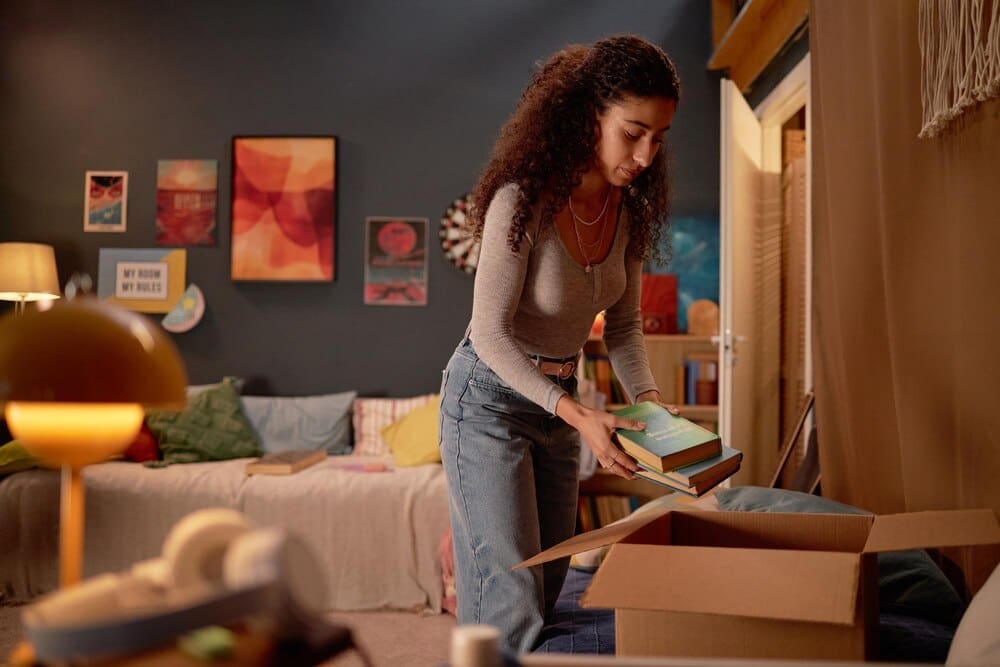The connection between our physical environment and our mental state is a powerful, often underestimated force shaping our daily lives. For anyone who has ever felt a wave of relief after tidying a messy desk or a sense of calm entering a well-organized room, the link is intuitive. Psychologists and neuroscientists are increasingly providing evidence for what many of us feel: a clean, orderly space can directly contribute to a clearer, more focused, and less anxious mind. This phenomenon occurs because our brains are profoundly affected by our surroundings; clutter acts as a source of excessive sensory input that competes for our limited cognitive resources, creating a low-grade but persistent hum of stress and signaling that our work is never truly done.
The Psychology of Clutter: Why Mess Creates Stress
The human brain is wired for order. We constantly scan our environment for information, and a disorganized space presents a significant challenge to this process. When faced with clutter, our visual cortex is overwhelmed, making it harder to process information and focus our attention.
Cognitive Overload and Distraction
Think of your attention as a finite resource. Every object in your field of vision pulls on that resource, whether you consciously realize it or not. A cluttered environment forces your brain to work harder to filter out irrelevant stimuli, leading to mental fatigue and a diminished capacity for deep focus.
A landmark study from the Princeton University Neuroscience Institute found that physical clutter in your surroundings competes for your attention, resulting in decreased performance and increased stress. When participants’ environments were cleared of distracting objects, they demonstrated a greater ability to focus and process information effectively. The mess isn’t just untidy; it’s a tangible drain on your cognitive energy.
The ‘Unfinished Business’ Signal
A pile of papers on your desk, a stack of laundry on a chair, or a sink full of dishes does more than just take up space. These items represent a series of postponed decisions and incomplete tasks. They act as a constant, nagging visual reminder of everything you should be doing.
This creates a subtle but chronic sense of being overwhelmed, contributing to procrastination and anxiety. Your home or workspace should be a place of rest and productivity, but when it’s filled with clutter, it can feel like a landscape of failure, reinforcing a cycle of stress that makes it even harder to get started on the very tasks the clutter represents.
Impact on Cortisol Levels
The psychological stress of clutter has a measurable physiological effect. Research published in the Personality and Social Psychology Bulletin explored the relationship between home environments and well-being. The study found that women who described their homes as “cluttered” or full of “unfinished projects” had higher levels of the stress hormone cortisol throughout the day.
Cortisol is critical for helping our bodies respond to immediate threats, but chronically elevated levels are linked to a host of health problems, including anxiety, depression, digestive issues, and sleep disturbances. In contrast, those who described their homes as “restful” and “restorative” showed a decline in cortisol over the course of the day, indicating their environment was helping them recover from daily stress, not contributing to it.
The Benefits of a Tidy Environment: More Than Just Aesthetics
Actively curating a clean and organized space is not merely about appearances. It is a proactive form of self-care that yields significant psychological and behavioral rewards, creating an upward spiral of positivity and productivity.
Enhanced Focus and Productivity
The inverse of clutter causing distraction is that order promotes focus. When your physical and digital workspaces are clear of non-essential items, your mind is freer to concentrate fully on the task at hand. You create an environment where the path of least resistance leads to productivity, not distraction.
This principle is why minimalist desk setups have become popular among writers, designers, and programmers. By removing visual noise, you are essentially telling your brain what is important, allowing it to dedicate its full power to complex problem-solving and creative thinking.
A Sense of Control and Self-Efficacy
In a world where many things feel beyond our control, our personal environment is one area where we can exert direct influence. The act of cleaning and organizing is a tangible, manageable task with a clear beginning and end. Successfully transforming a chaotic space into an orderly one provides a powerful psychological boost.
This accomplishment fosters a sense of competence and self-efficacy—the belief in your own ability to complete tasks and achieve goals. This feeling can then spill over into other areas of your life, making you feel more capable of tackling larger, more abstract challenges at work or in your personal life.
Improved Mood and Reduced Anxiety
The process of tidying can be a form of mindfulness in action. Repetitive, physical tasks like folding laundry, wiping down counters, or sorting objects can be meditative. They anchor you in the present moment, providing a break from anxious thought loops about the past or future.
Furthermore, the end result—a clean and serene environment—is visually calming. It reduces the sensory overload that contributes to stress and creates a sanctuary where you can truly relax and recharge. This sense of peace and satisfaction is a direct antidote to feelings of anxiety and being overwhelmed.
Better Decision-Making and Healthier Choices
Interestingly, the order in our external world may promote more orderly thinking and self-regulation. A study published in the journal Psychological Science found that participants in an orderly room were more likely to make healthier and more generous choices than those in a disorderly room. For example, when offered a snack, those in the tidy room were more likely to choose an apple, while those in the messy room were more likely to choose a chocolate bar.
The researchers suggest that an orderly environment primes our brains for convention and making responsible choices. By tidying up, you may be subtly nudging yourself toward better habits in other domains, from diet and exercise to financial planning.
From Clutter to Clarity: Actionable Steps to Get Started
Understanding the benefits is one thing; implementing change is another, especially when you feel overwhelmed. The key is to start small and build momentum with consistent, manageable actions.
Start Small: The Five-Minute Rule
The thought of decluttering an entire house can be paralyzing. Instead, commit to just five minutes of tidying. Set a timer and tackle one tiny area—a single drawer, a small section of a countertop, or the pile of mail by the door. Anyone can do something for five minutes, and this small victory makes it easier to keep going or to try again tomorrow.
The ‘One In, One Out’ Principle
To prevent clutter from re-accumulating, adopt a simple maintenance rule. For every new item you bring into your home (like a new shirt, book, or kitchen gadget), one similar item must be donated or discarded. This creates a balanced ecosystem in your home and forces you to be more mindful about your purchases.
Designate a Home for Everything
One of the primary causes of clutter is “homeless” items. When an object doesn’t have a designated storage spot, it gets left on the nearest available surface. Take the time to decide where things belong. Once everything has a home, cleanup becomes a fast and automatic process of returning items to their places rather than a series of complex decisions.
Embrace Digital Decluttering
The principles of cognitive load apply equally to our digital environments. A cluttered computer desktop with dozens of icons, an inbox with thousands of unread emails, and a disorganized file system can be just as stressful as a messy room. Schedule time to clean up your digital life: unsubscribe from junk email, organize files into logical folders, and clear your desktop.
When Clutter Becomes a Deeper Issue
For most people, clutter is a manageable problem. However, for some, the inability to part with possessions can be a sign of a more significant underlying issue that requires professional attention and compassion.
Understanding Hoarding Disorder
It is crucial to differentiate between general messiness and Hoarding Disorder. Hoarding Disorder is a recognized mental health condition characterized by a persistent difficulty discarding or parting with possessions, regardless of their actual value. This behavior leads to an accumulation of items that congest and clutter living areas, rendering them unusable.
This condition is not a lifestyle choice or a character flaw; it is a complex disorder that often co-occurs with anxiety, depression, or OCD. If you or someone you know is struggling with hoarding, organizational tips are not enough. Seeking help from a mental health professional trained in treating this disorder is essential.
Clutter as a Symptom
Chronic and overwhelming clutter can also be a symptom of other mental health challenges. For individuals experiencing depression, the lack of energy and motivation can make even basic housekeeping feel impossible. For those with ADHD, difficulties with executive functions like organization and task initiation can lead to persistent mess. In times of grief, objects can become powerful links to a lost loved one, making them difficult to part with.
If your struggle with clutter feels insurmountable and is causing significant distress or impairing your ability to function, it may be a sign to seek a professional evaluation. A therapist can help you address the root cause, whether it’s depression, anxiety, or another condition, providing you with the tools to manage both your internal and external worlds.
Ultimately, the state of our environment is both a reflection and a driver of our mental state. While a clean room won’t solve all of life’s problems, the act of creating and maintaining order is a powerful and accessible tool for reducing stress, improving focus, and fostering a fundamental sense of well-being. By taking small, deliberate steps to clear our physical and digital spaces, we can create more room in our minds for clarity, peace, and purpose.












